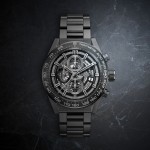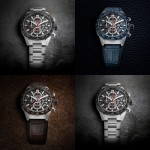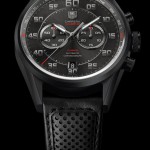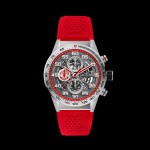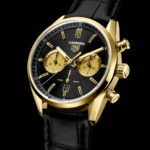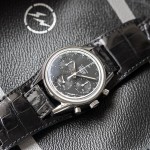Hands On: TAG Heuer Carrera Chronograph “Glassbox”
A modern take on the classic racing chronograph.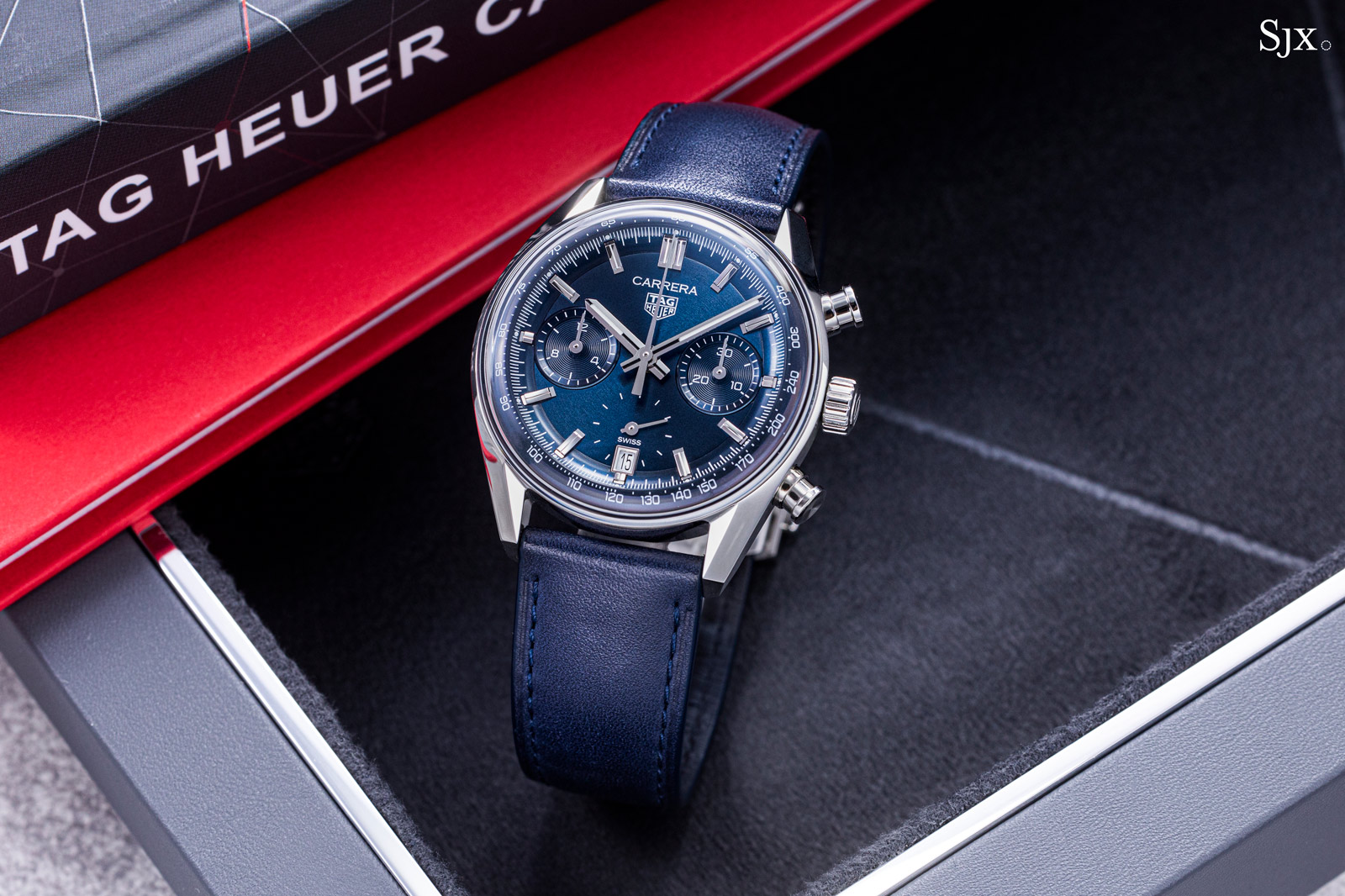
It’s been 60 years since Jack Heuer introduced perhaps his best-known creation, the Carrera. Conceived as a no-frills chronograph for racing drivers, the original Carrera combined beauty and practicality without sacrificing style.
Having released several vintage remakes, TAG Heuer has now pivoted and gently modernised its signature chronograph. The Carrera Chronograph “Glassbox” retains the outline of the original, but it is recognisably different thanks to the highly-domed sapphire crystal – hence the “Glassbox” nickname – that allows the tachymeter scale to sit raised above the dial. The raised tachymeter echos the contours of the crystal, giving the watch a decidedly contemporary flair.
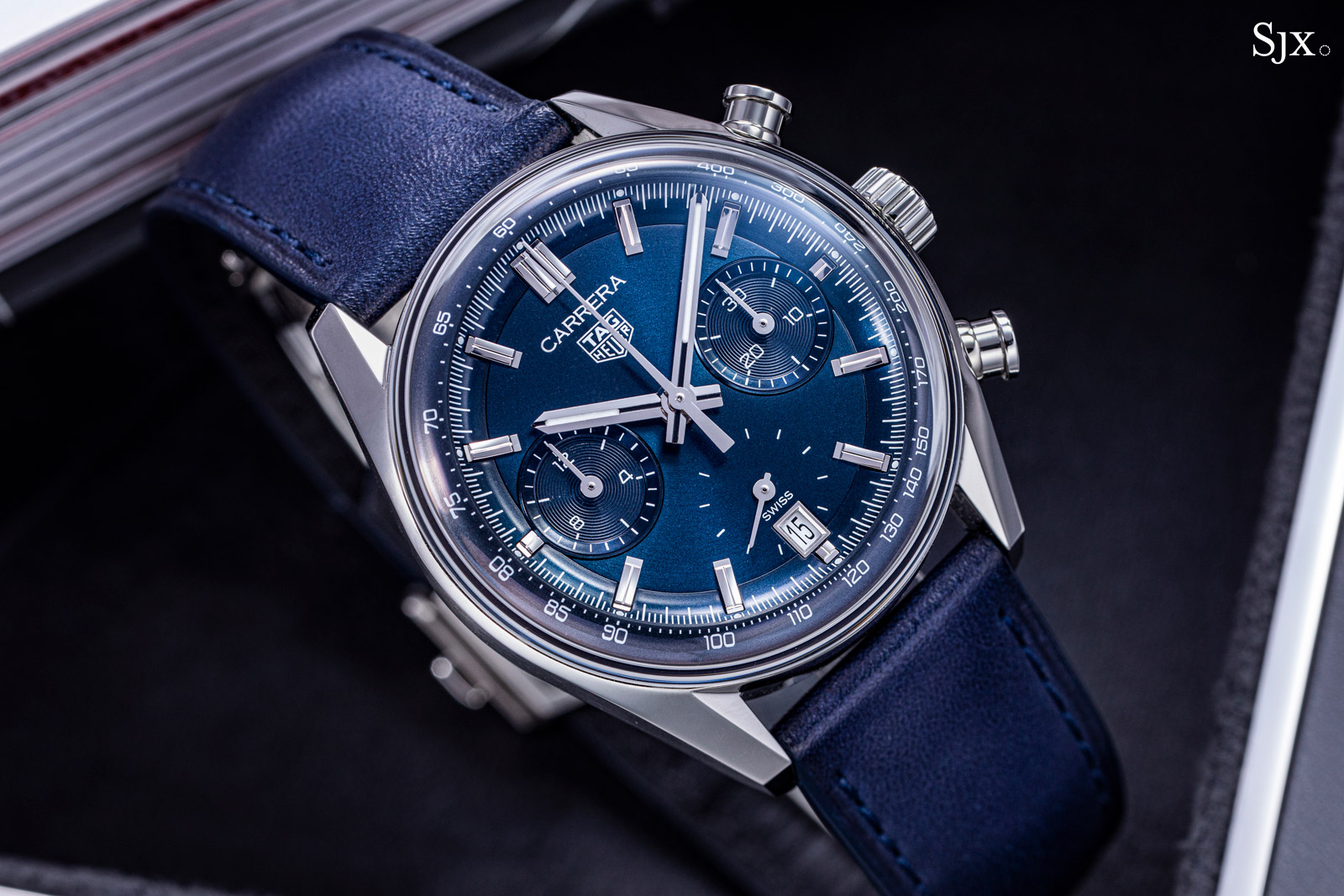
Initial thoughts
The Glassbox successful combines the old and new. The watch manages to convey evoke the original, while still looking like a modern watch, rather than a remake. The raised tachymeter scale and domed crystal serve to give the watch a visual depth that vintage originals lack.
That said, essential elements from the vintage original have been ported over to the new design, like the typography on the tachymeter scale and applied markers for instance.
Importantly, the Glassbox is smaller than most other comparable Carrera models, with a case that’s just 39 mm in diameter. The size suits the vintage-inspired design, although the watch still remains noticeably thick as a result of the movement.
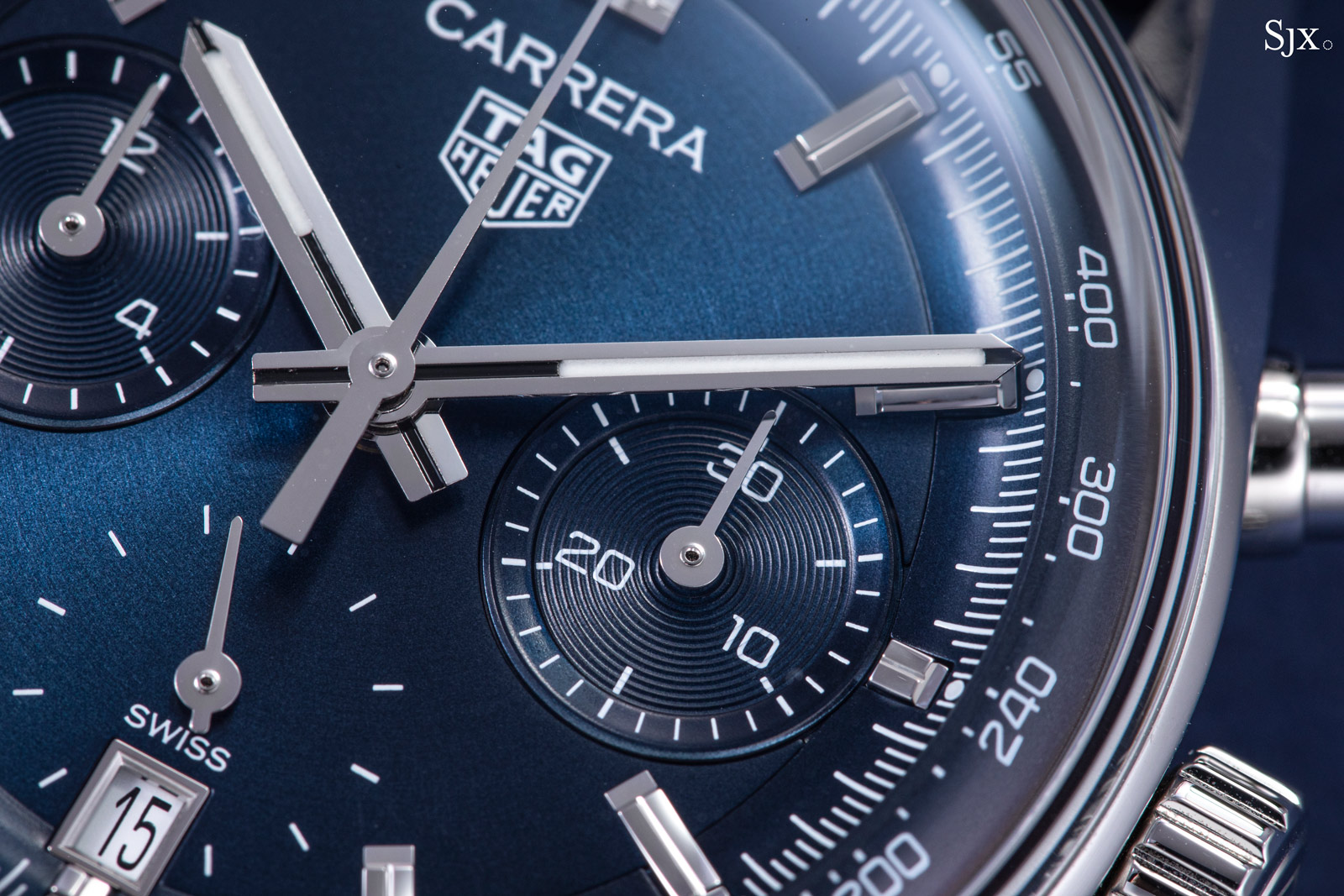
Interestingly, the two dials actually have different designs. The position of the date, for instance, is at 12 o’clock on the “reverse panda” and at six on the blue dial.
Of the two, I gravitate towards the blue dial with its minimalist styling. Instead of the typical three-register layout, the blue dial has been pared back with “ghost” small seconds at six. But the six o’clock position on the blue dial spoils the minimalism of the “ghost” seconds register. I would have preferred no date altogether.
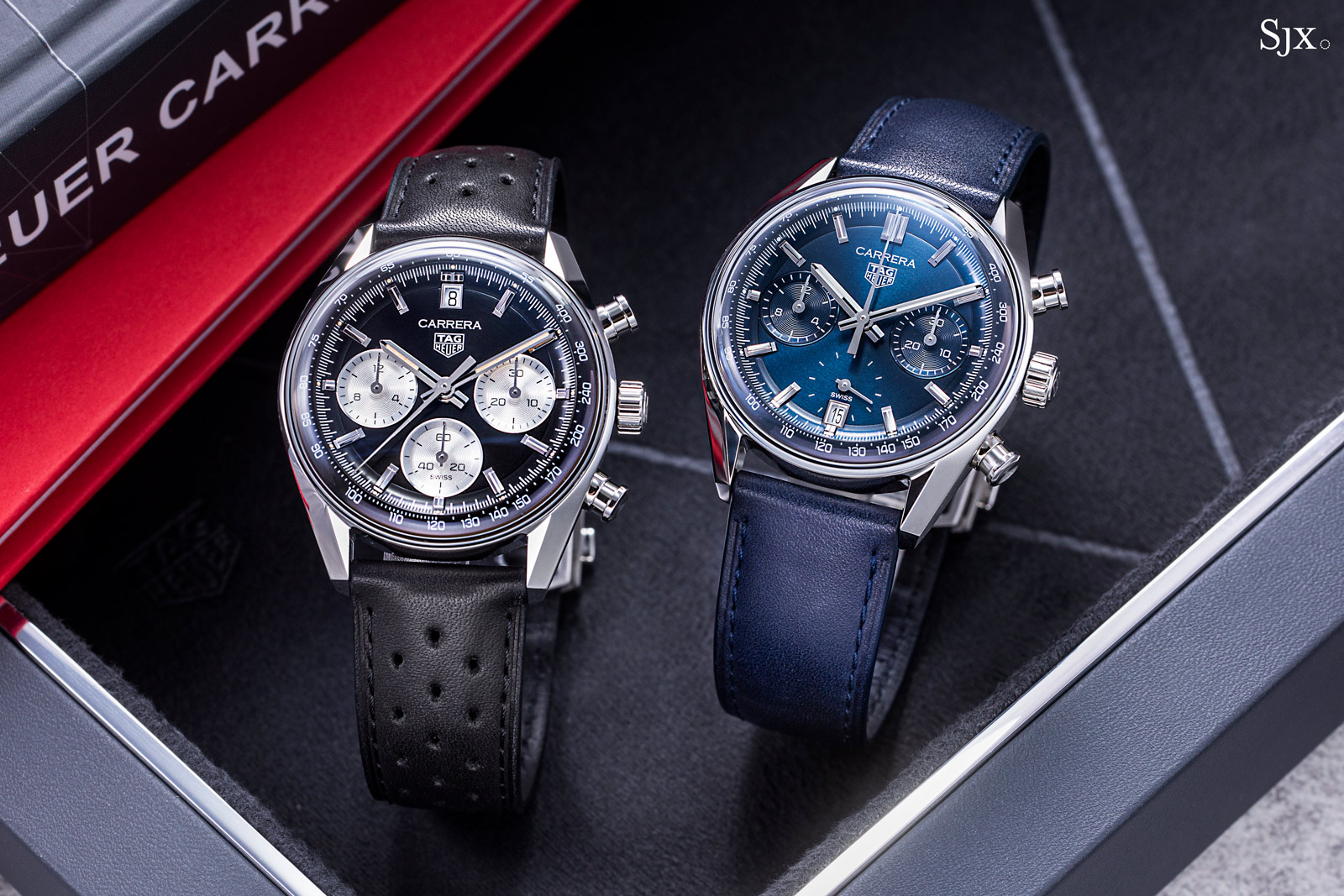
As for the “reverse panda”, I would like done away with the faux-patina Super-Luminova found on the “reverse panda”, for instance, since it feels out of place on a modern design. On the other hand, the 12 o’clock date actually camouflages the date display well.
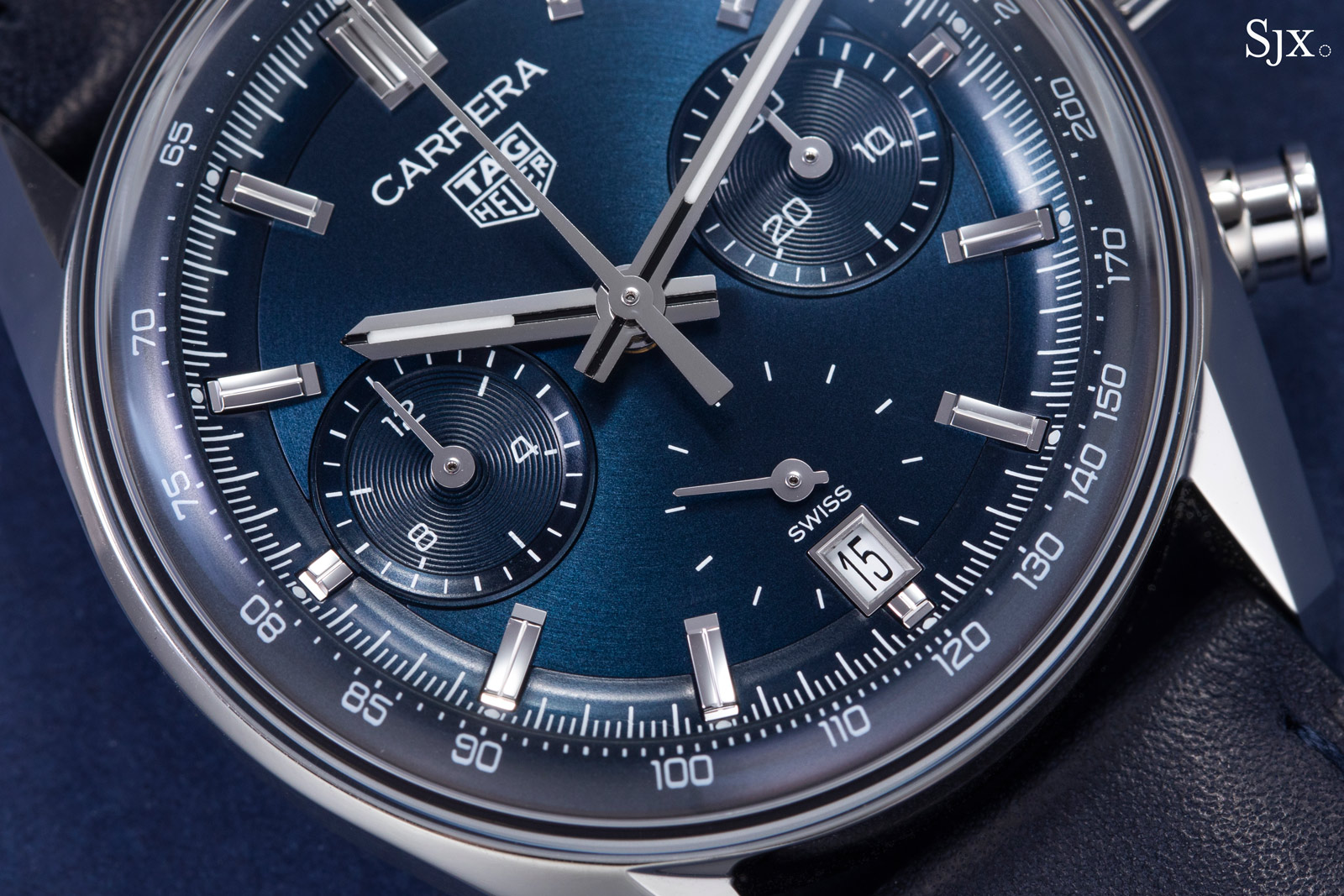
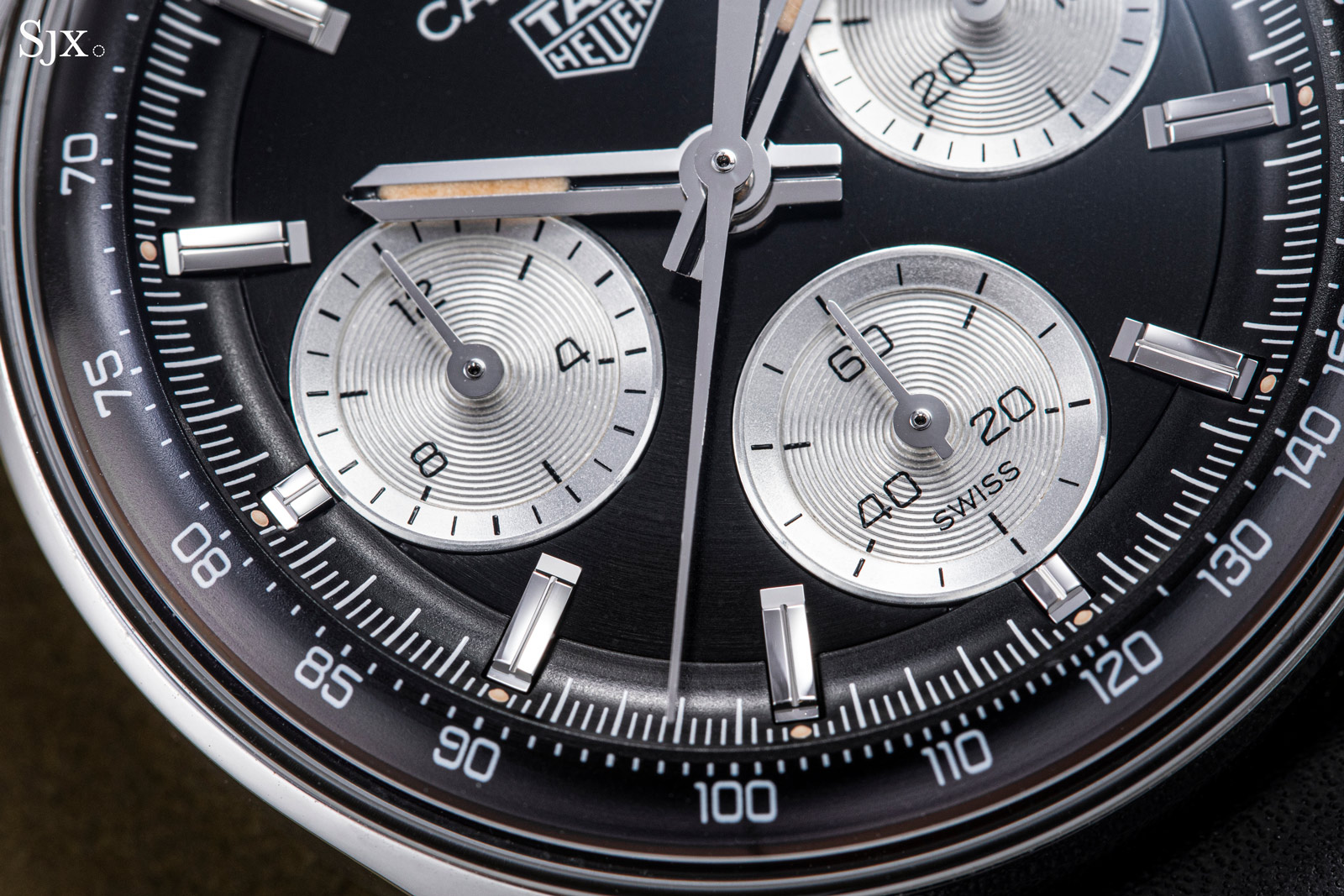
The Glassbox is priced at US$6,450 in either guise, making it about 10% more expensive than the standard Carrera models in the present collection. But the Glassbox benefits from both a strong, modern design, as well as a more compact case that’s just 39 mm. In comparison, the other Carrera models with the same movement are 42 mm, arguably too chunky for the design.
As for the competition, like Zenith or Frederique Constant for example, the Glassbox compares well thanks to its solid execution and a quality in-house movement.
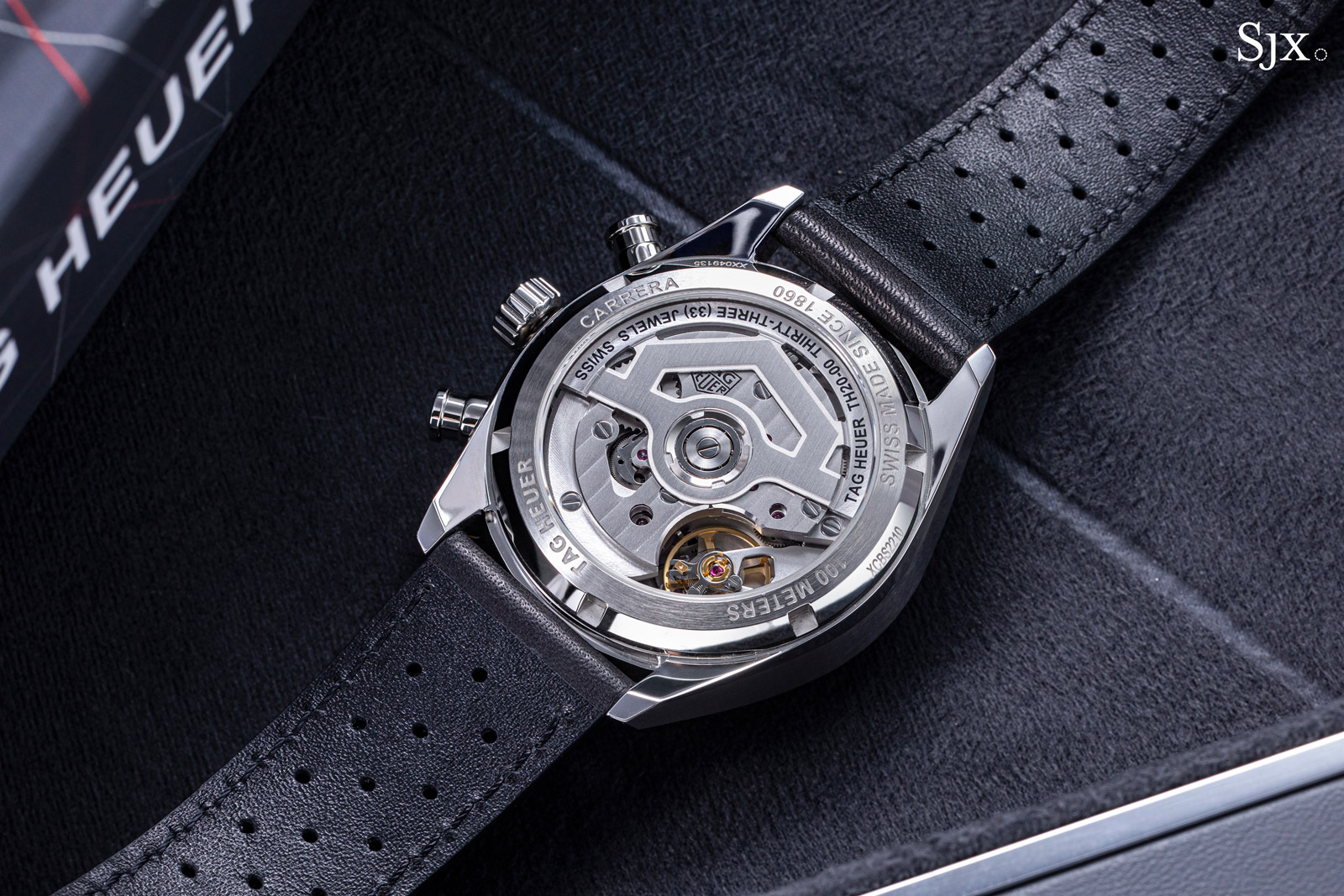
A modern evolution
Deeply intertwined with motor racing, Heuer’s history is replete with renowned drivers, champion teams, and significant races. Arguably no watch embodies this heritage more than the Carrera. In the early 1960s, Jack Heuer, a great-grandson of the brand’s founder, sought to create a racing chronograph that was both functional and elegant.
He christened the design “Carrera” after the infamous Carrera Panamericana rally that took place in Mexico until excessive casualties led to the event’s cancellation in 1954.
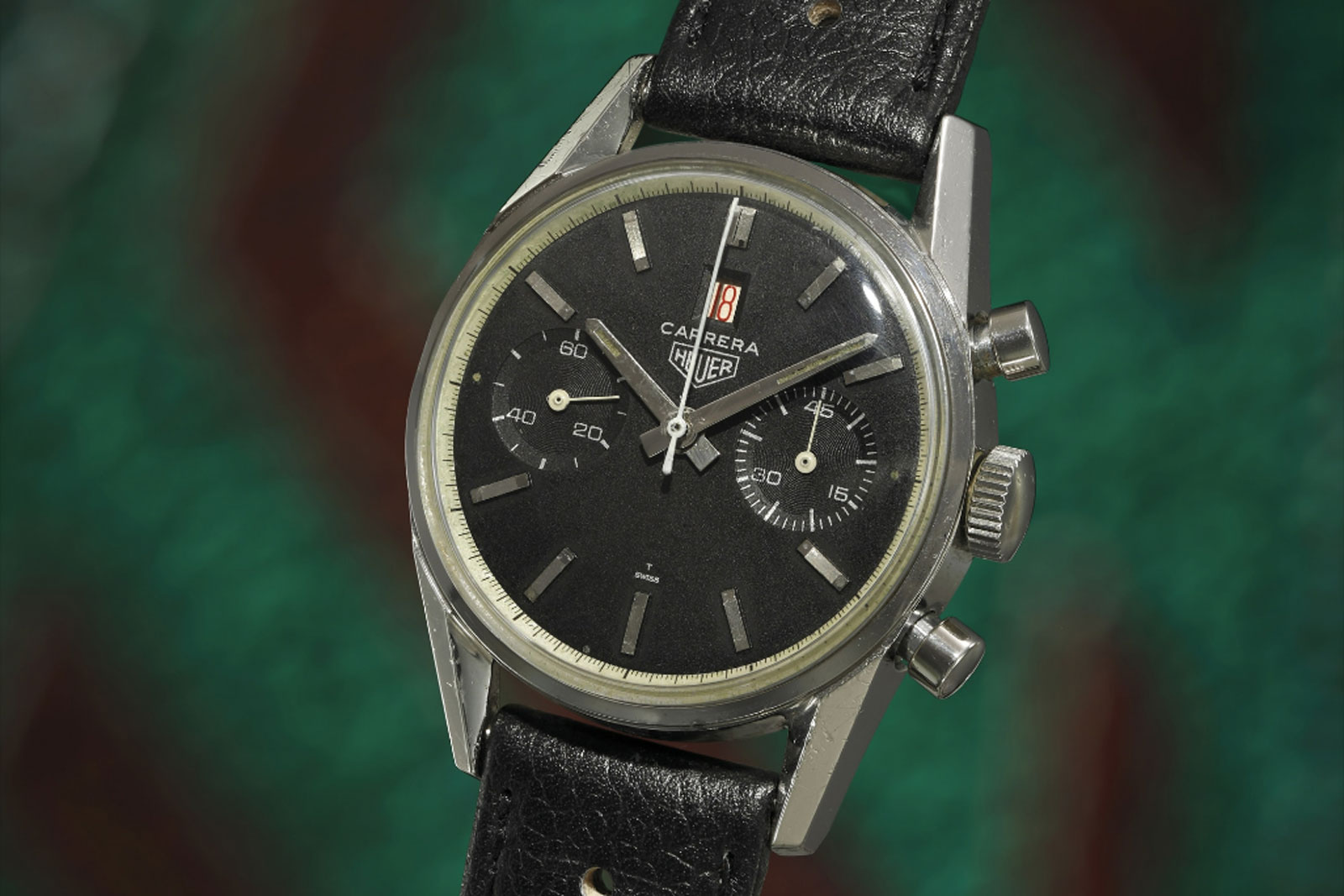
An example of the Carrera ref. 3147 “Dato 12” that sold in 2017. Image – Phillips
The modern-day TAG Heuer Carrera is an evolution of the originals, the first of which was the ref. 2447 introduced in 1963.
While today’s Carreras boast modern styling and in-house movements, they incorporate numerous design elements from their predecessors. The Glassbox continues pay to homage to the brand’s storied racing heritage while gaining some contemporary flair.
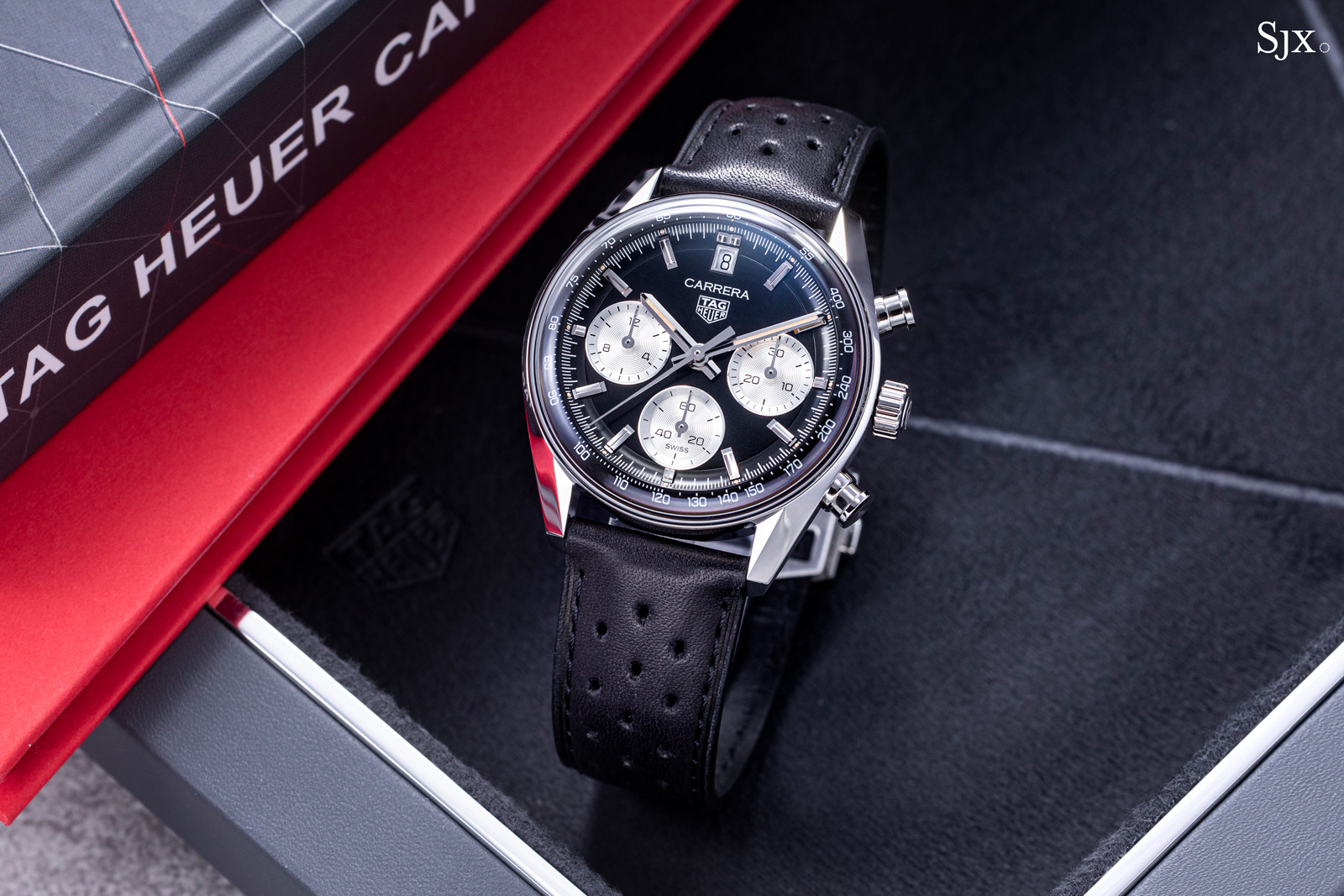
A glass box
The defining attribute of the Glassbox is its case profile, which is distinguished by a raised tachymeter scale under a highly-domed crystal. The scale rises upwards towards the centre of the dial, following the curve of the domed crystal, which was influenced by the domed Hesalite found on vintage Heuer chronographs. And the seconds track around the dial is bowl-shaped, forming a visual balance to the raised tachymeter.
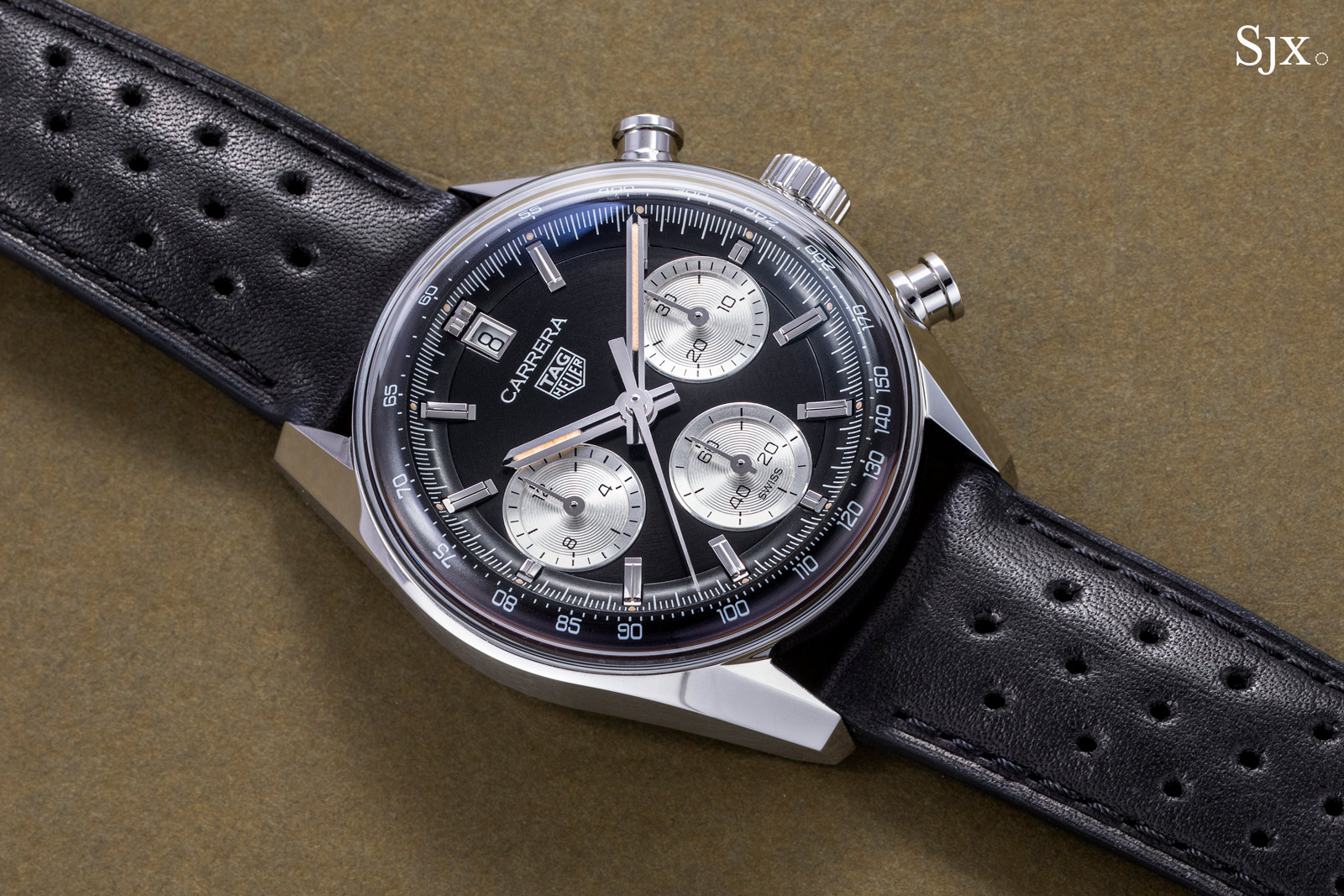
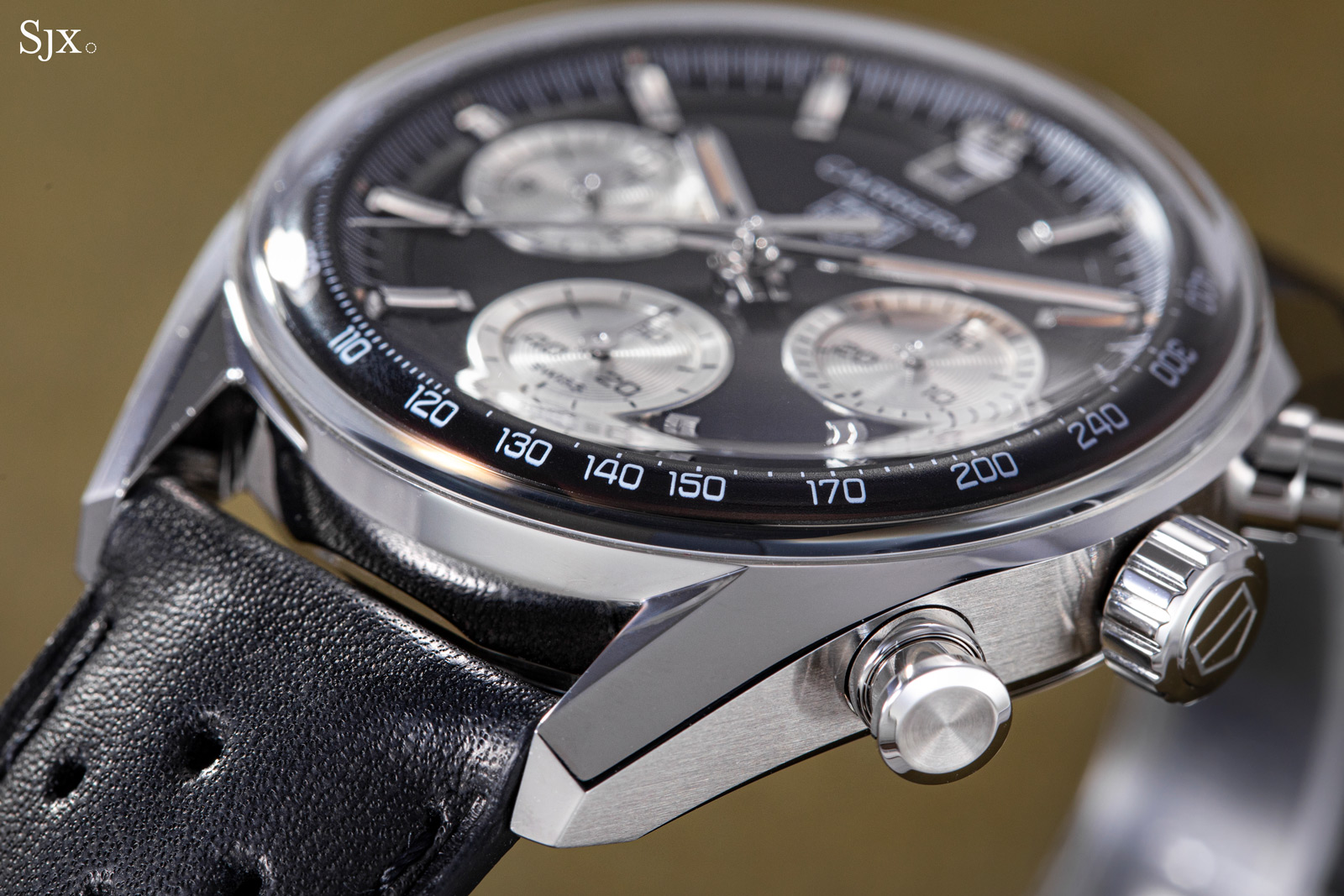
The domed crystal sits on a 39 mm stainless steel case that has no bezel, enhancing the open feel of the dial. While the bezel-less top is definitely modern in style the case profile and lugs are clearly vintage inspired. The facetted lugs are clearly derived from the vintage Carrera.
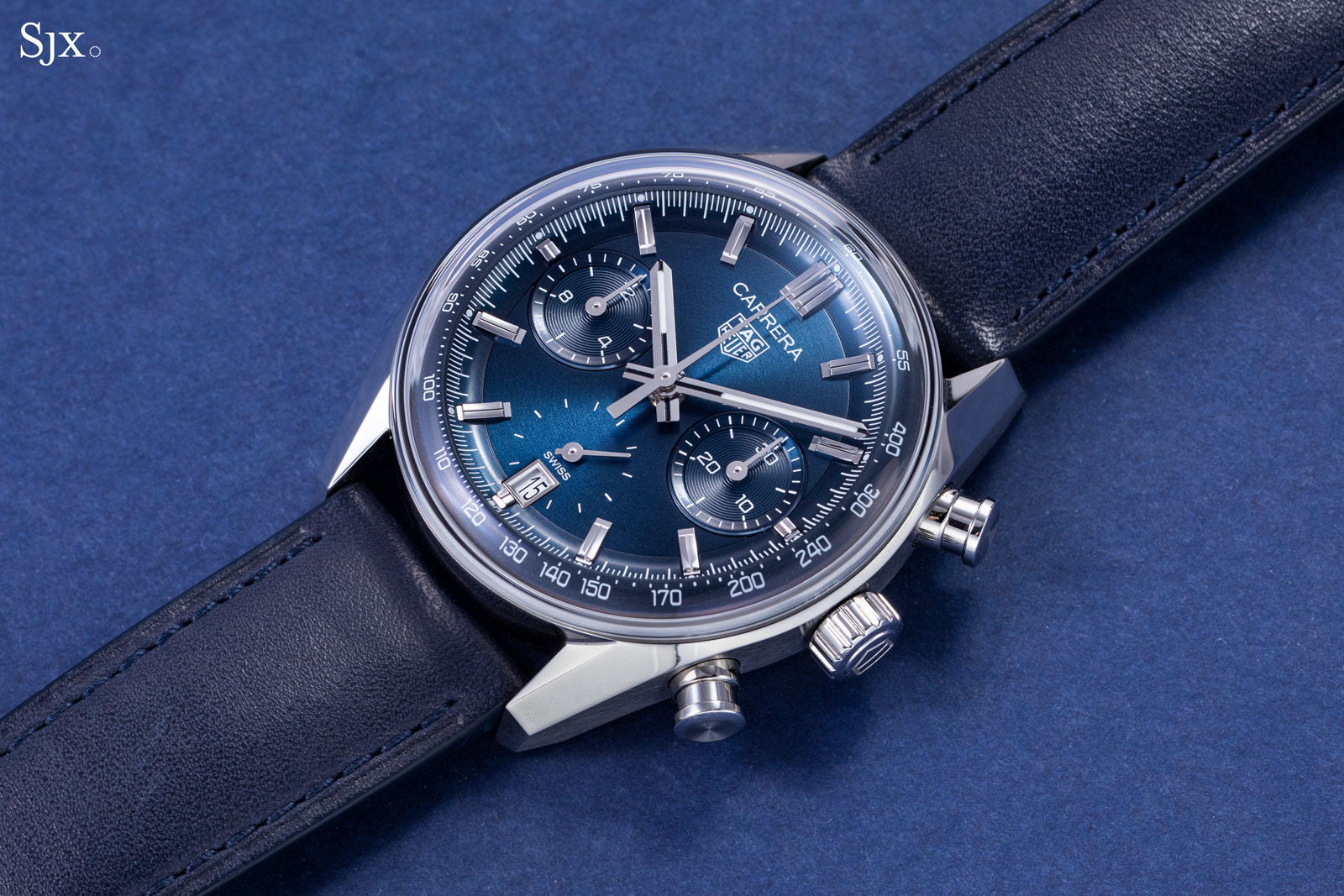
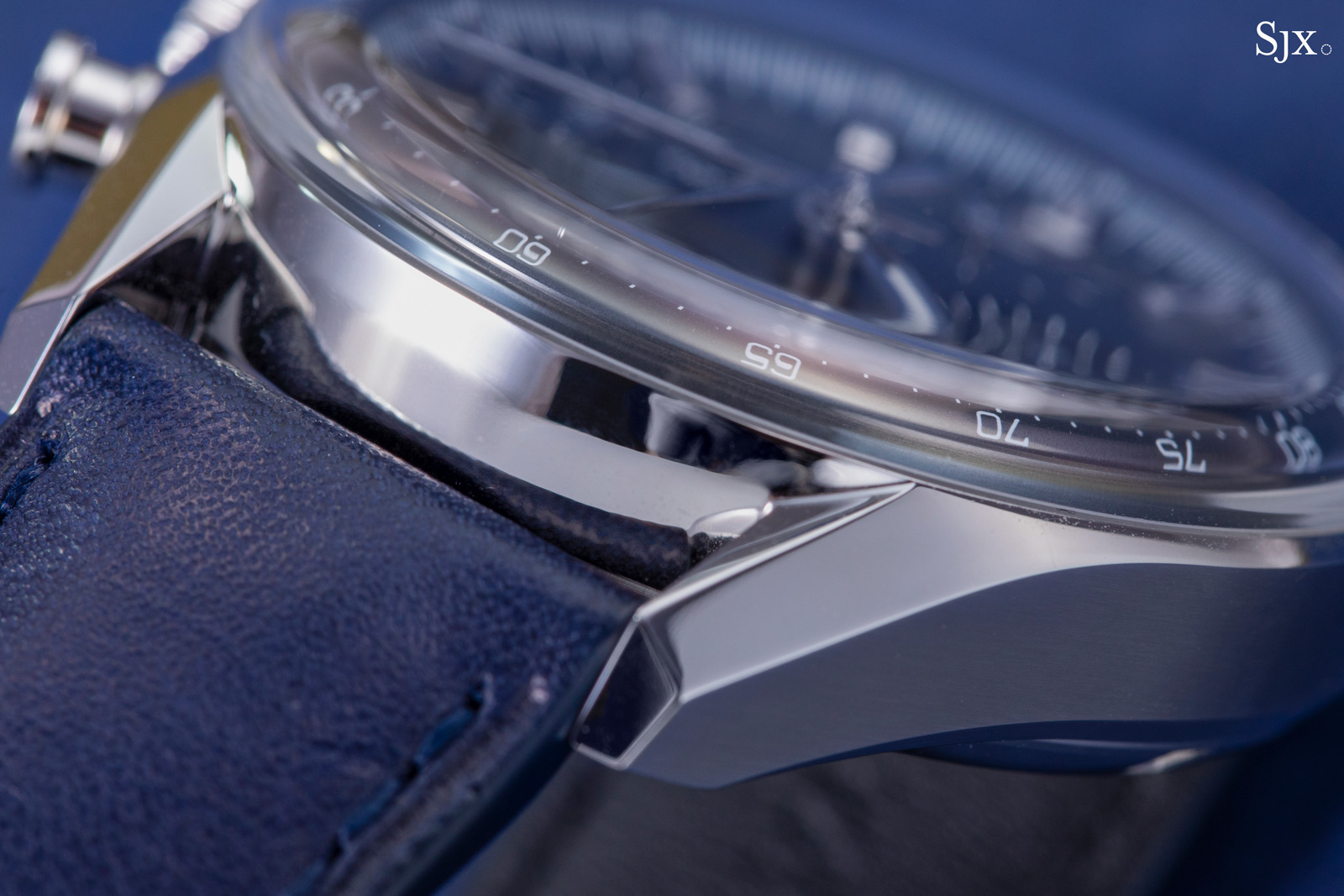
Distinguishing itself from its larger, 42 mm counterparts, the Glassbox feels a bit more elegant and reminiscent of the vintage originals. The compact size leaves the Glassbox more aesthetically pleasing and also more comfortable compared to 42 mm models. The Glassbox is, however, still fairly thick, although the domed crystal helps conceal some of its height.
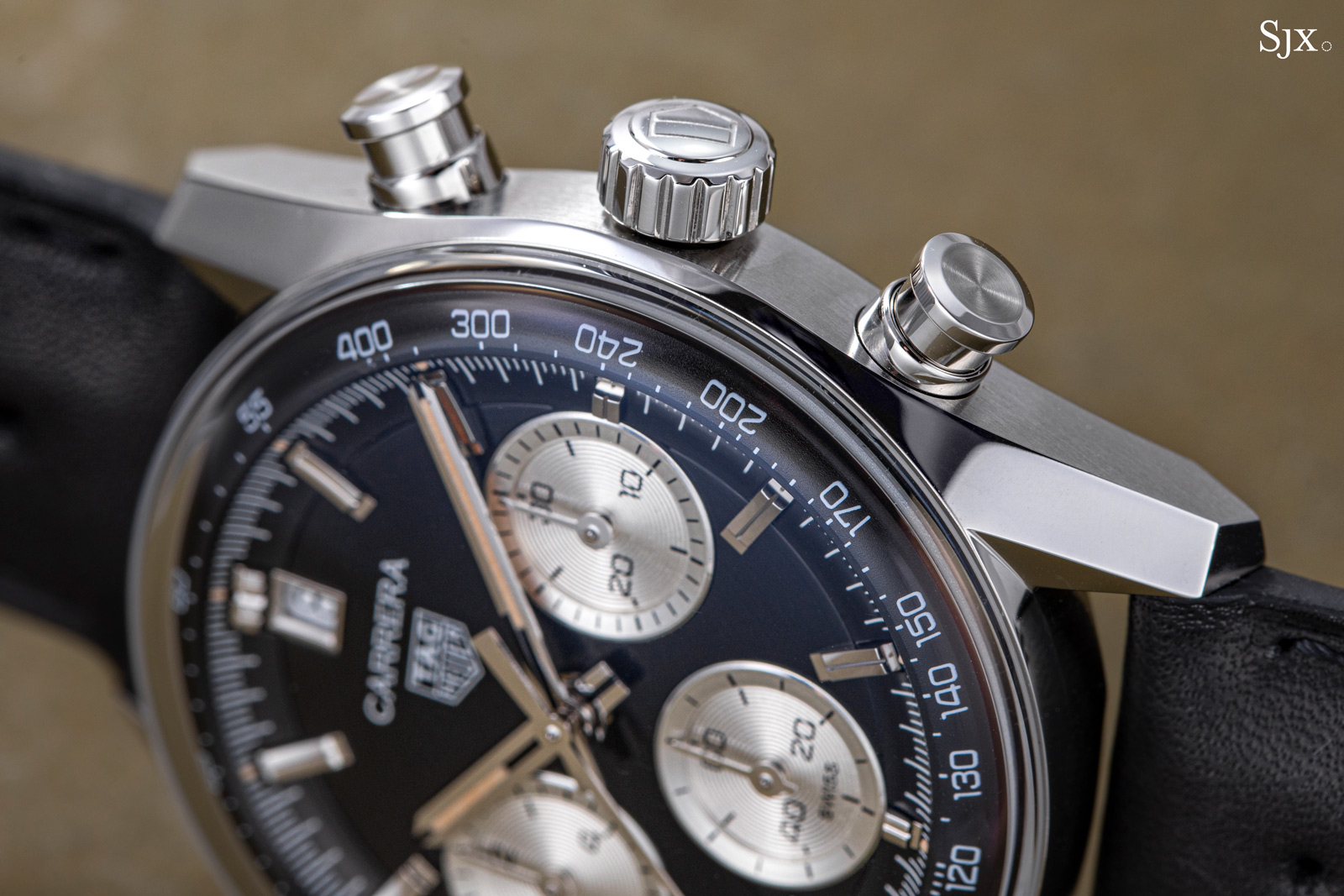
The mushroom-style pushers are also found on other current Carrera
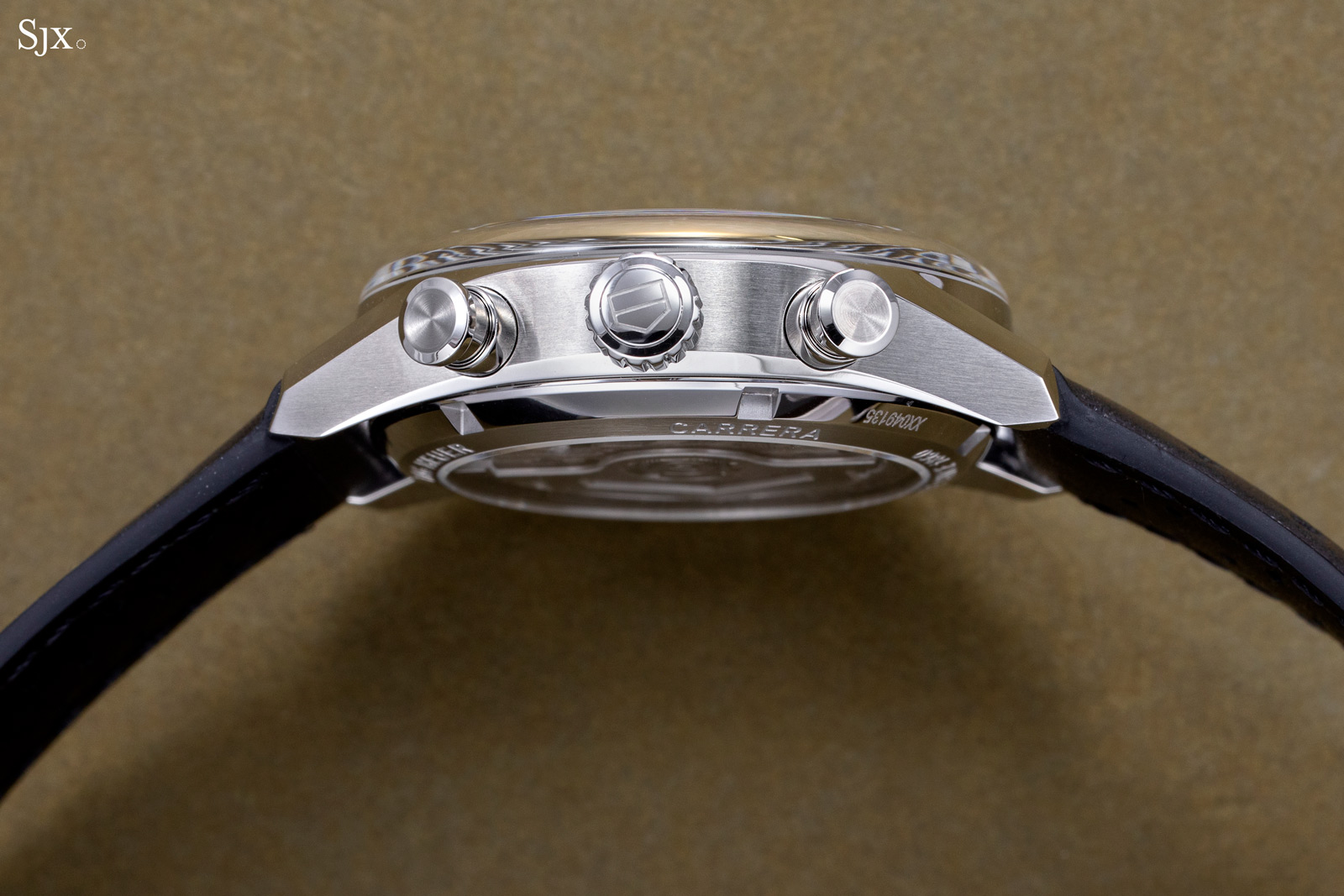
Different in design and spirit
The Glassbox makes its debut in two dial styles – blue or “reverse panda”. Both have a brushed finish along with vintage-inspired typography and branding, but are otherwise very different.
The blue dial is definitely more modern in both colour and design. The metallic dial colour is definitely a shade made for today, while the design is cleaner. In fact, it resembles a two-counter layout thanks to a “ghost” seconds at six o’clock.
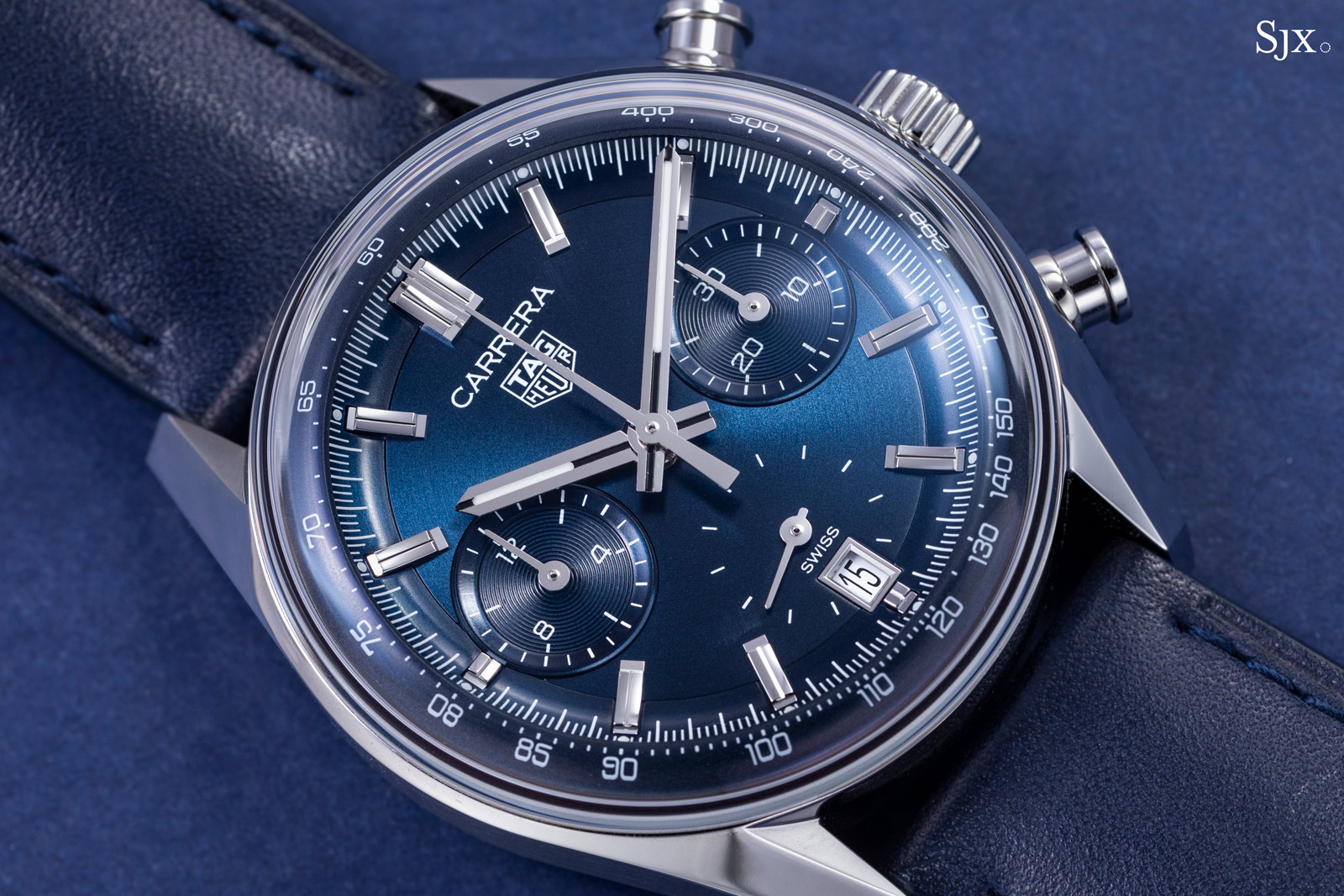
The Glassbox in blue
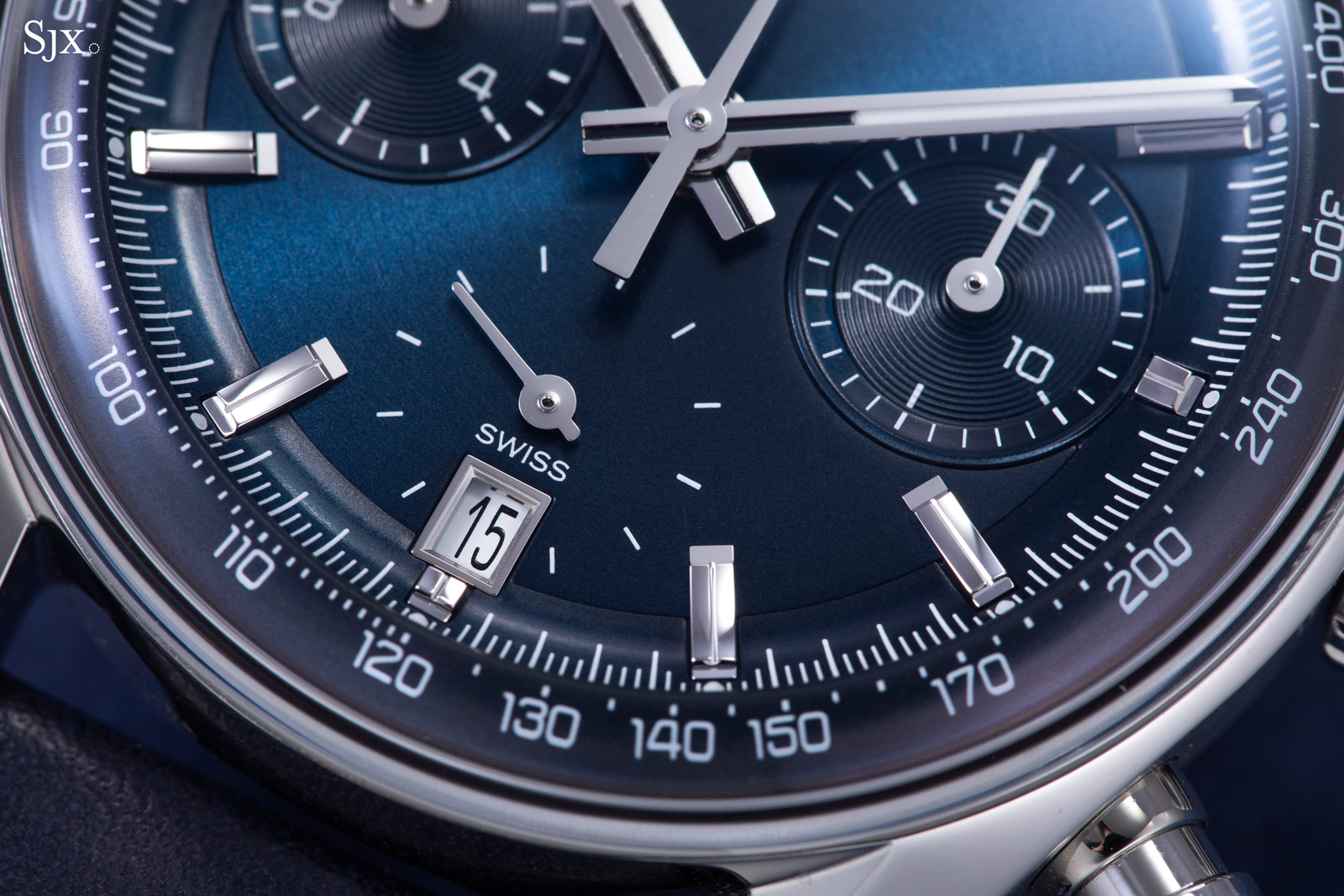
In comparison, the “reverse panda” is decidedly vintage-inspired design with its three-register layout, date at 12 o’clock, and faux-vintage lume.
The 12 o’clock date is an interesting design quirk that is derived from two historical models, the ref. 3,47 “Dato 12” and the ref. 2447 NS (“N” for noir and “S” for silver). But the date at 12 o’clock is somewhat impractical since the central seconds hand partly obscures the date when the chronograph is reset.
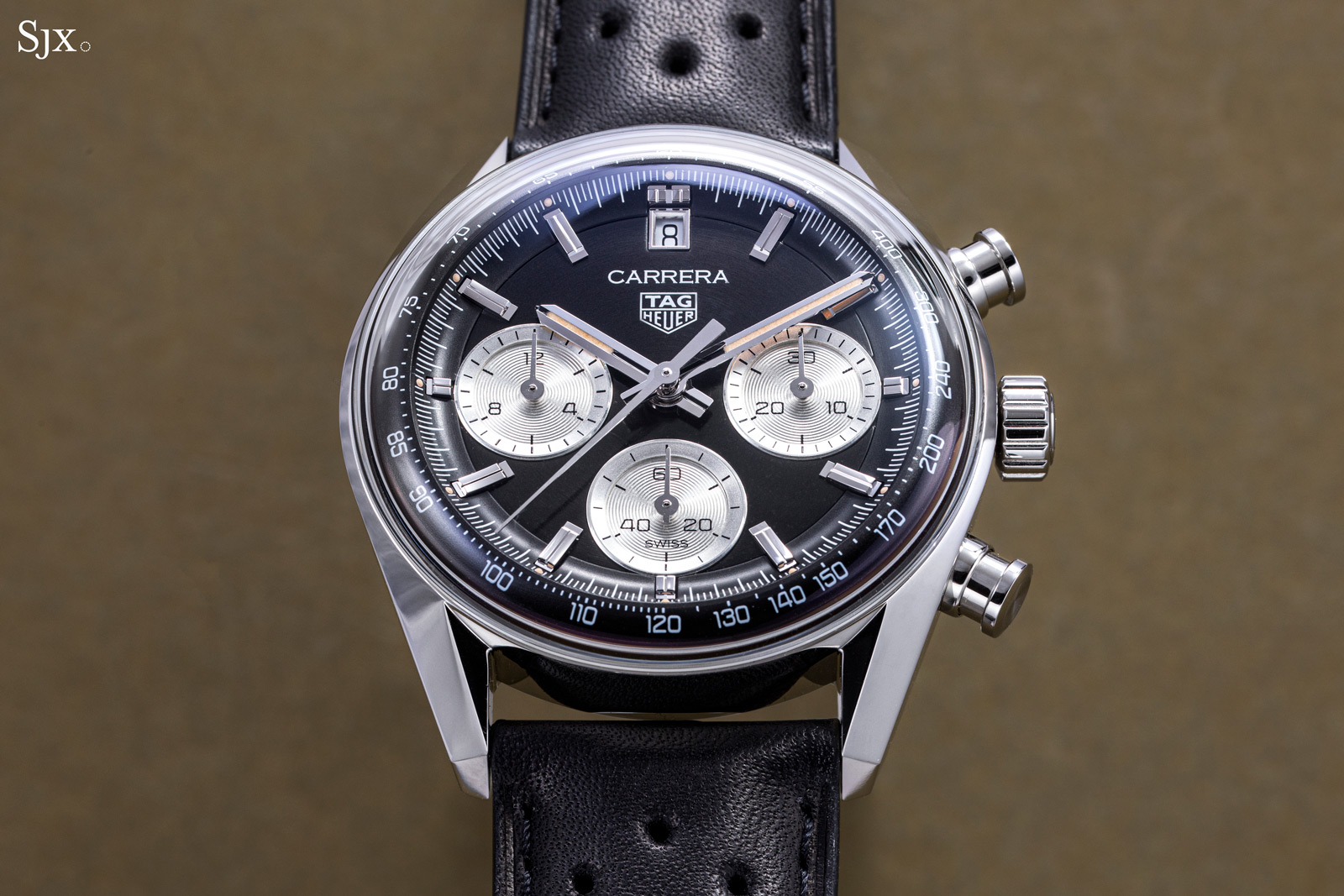
And in a “reverse panda” black colourway
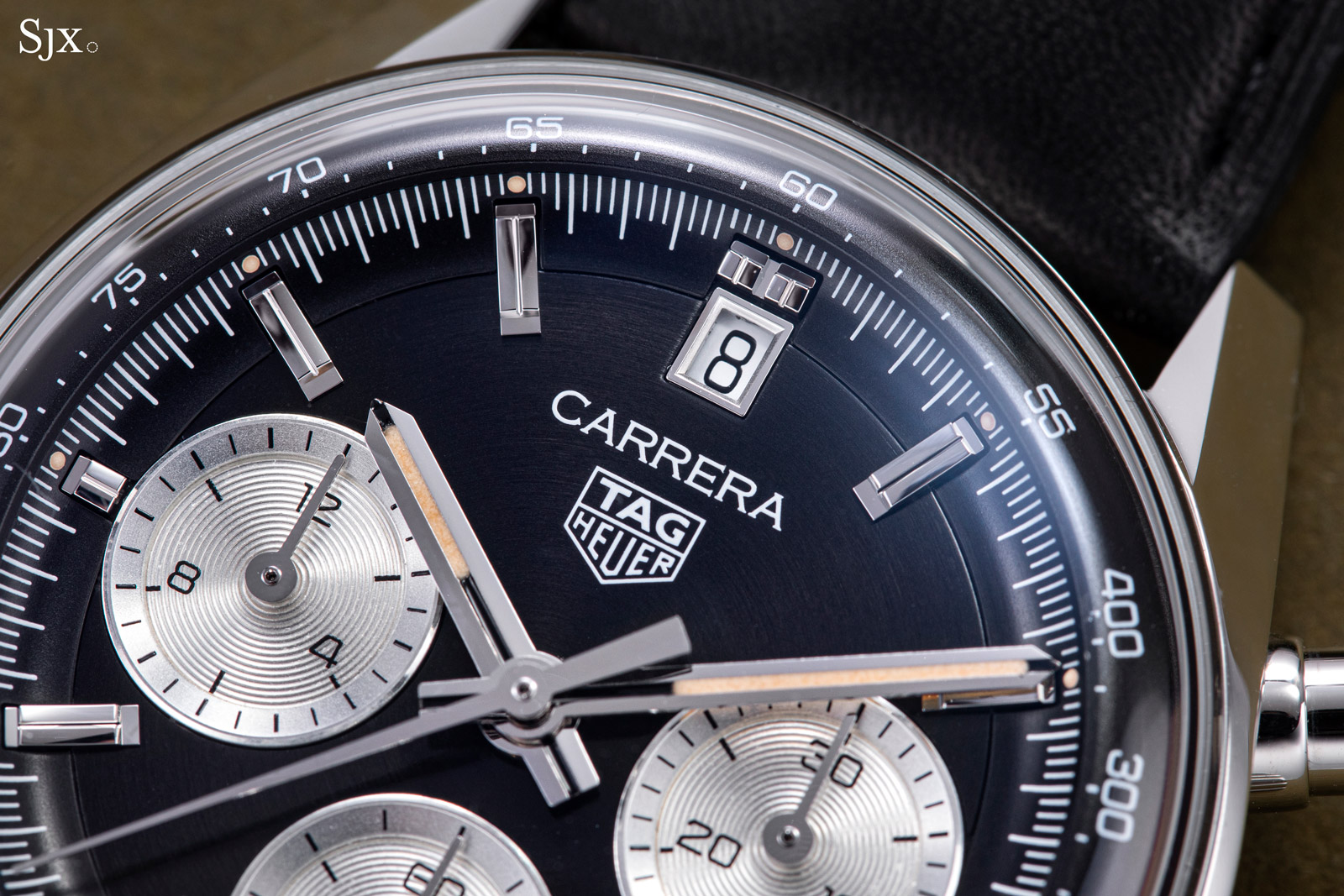
TH20-00
The Glassbox is powered by the Calibre TH20-00, an in-house movement developed by Carole Forestier-Kasapi, the head of movement development at TAG Heuer. It’s essentially a new-and-improved version of the Heuer-02, the brand’s longstanding chronograph movement. Amongst the upgrades is bi-directional winding.
The TH20-00 movement is a modern calibre that boasts both a column wheel and vertical clutch, while its power reserve is a generous 80-hours. In its price segment the TH20-00 is certainly a capable movement, although it is plainly industrial when seen through the open back.
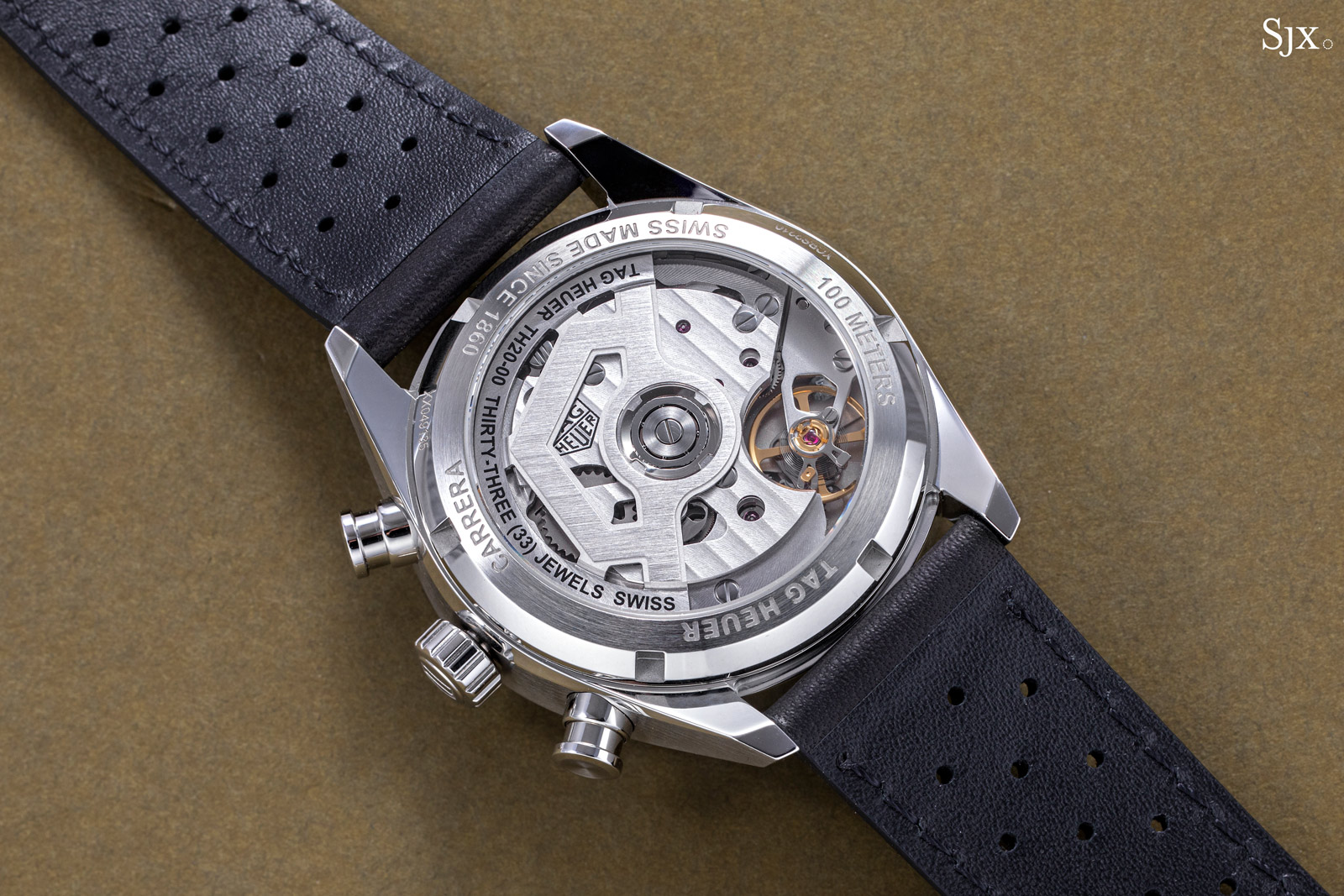
A little bit of window dressing like a fancier rotor would have gone some way in making the rear view more interesting. Another detail that could be improved is the Etachron regulator, which is acceptable considering the price but not the prettiest of regulating devices.
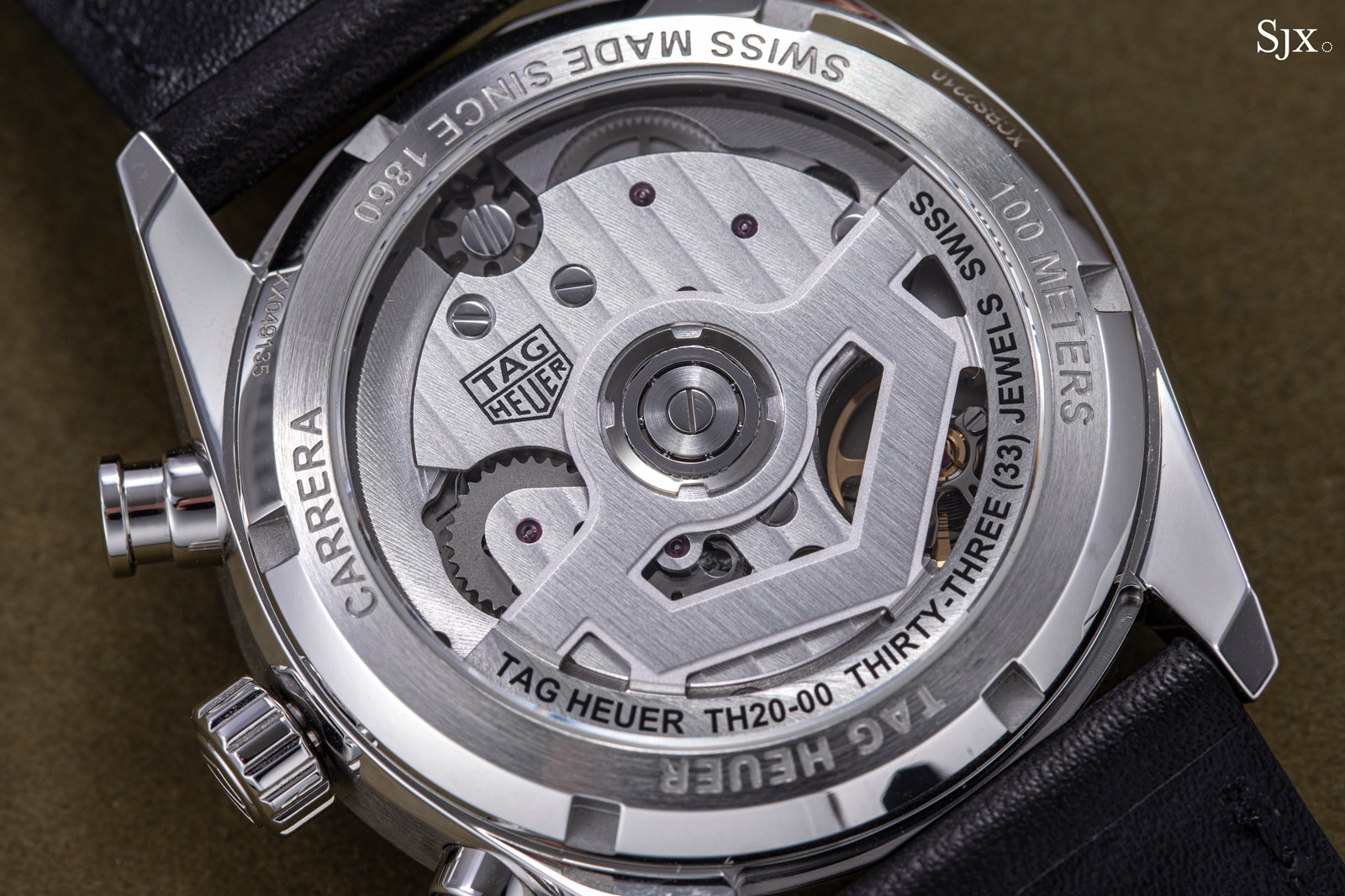
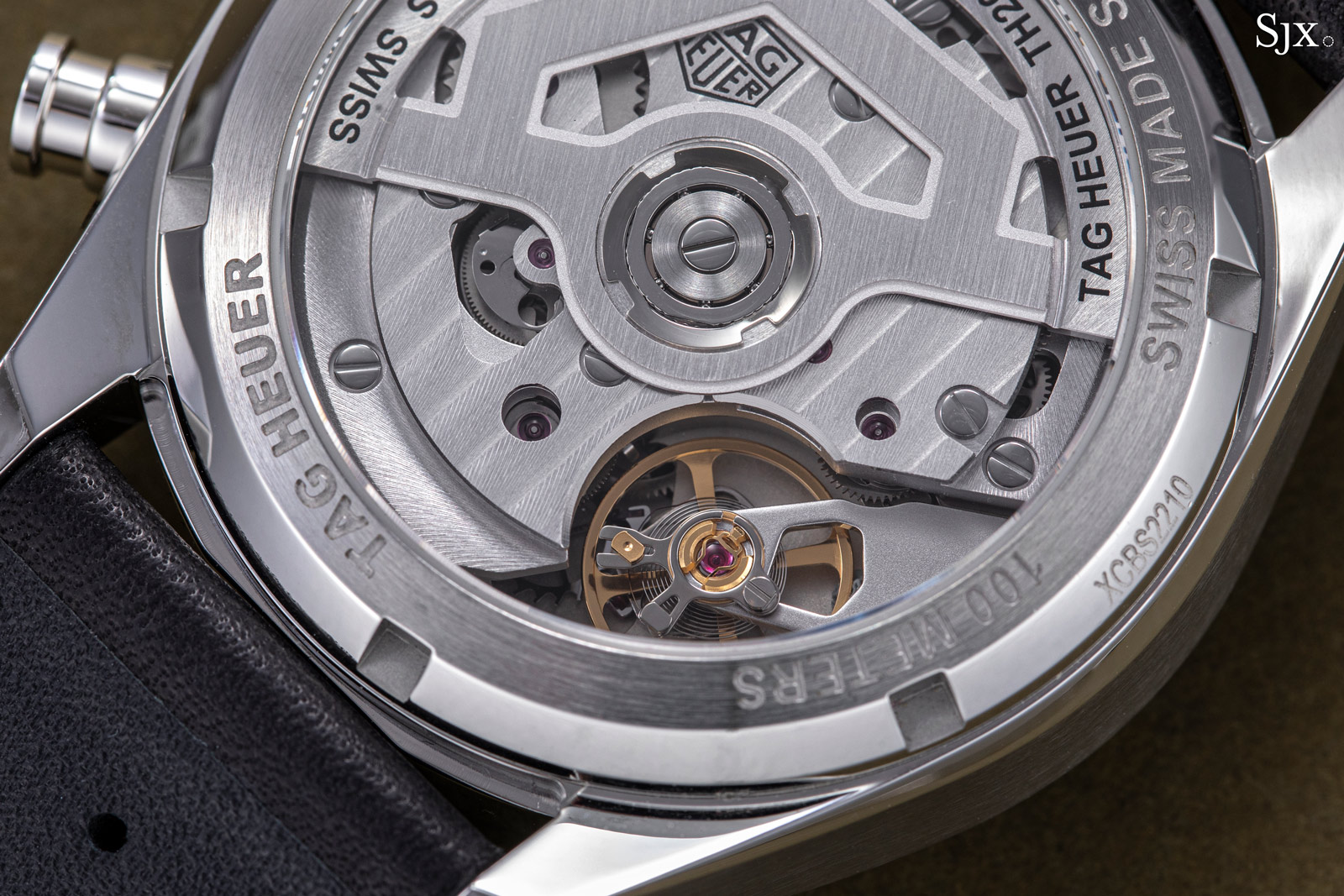
Concluding thoughts
The Carrera Chronograph “Glassbox” embodies the spirit of the original Carrera from 1963, but presents it in a modernised, appealing package. The very fact that it is not a remake is a point of appeal. Many brands, TAG Heuer included, have arguably done too many vintage-inspired remakes, draining the novelty of such designs.
In this context, the Glassbox is a breath of fresh air. Though it features many vintage-inspired elements, the novel construction of a bezel-less case, domed crystal, and raised tachymetre scale immediately distinguishes it as a new, original design.
Match that with a movement upgraded under the auspices of one of the industry’s most esteemed technical specialists, and the result is a compelling combination of design, solid mechanics, and value.
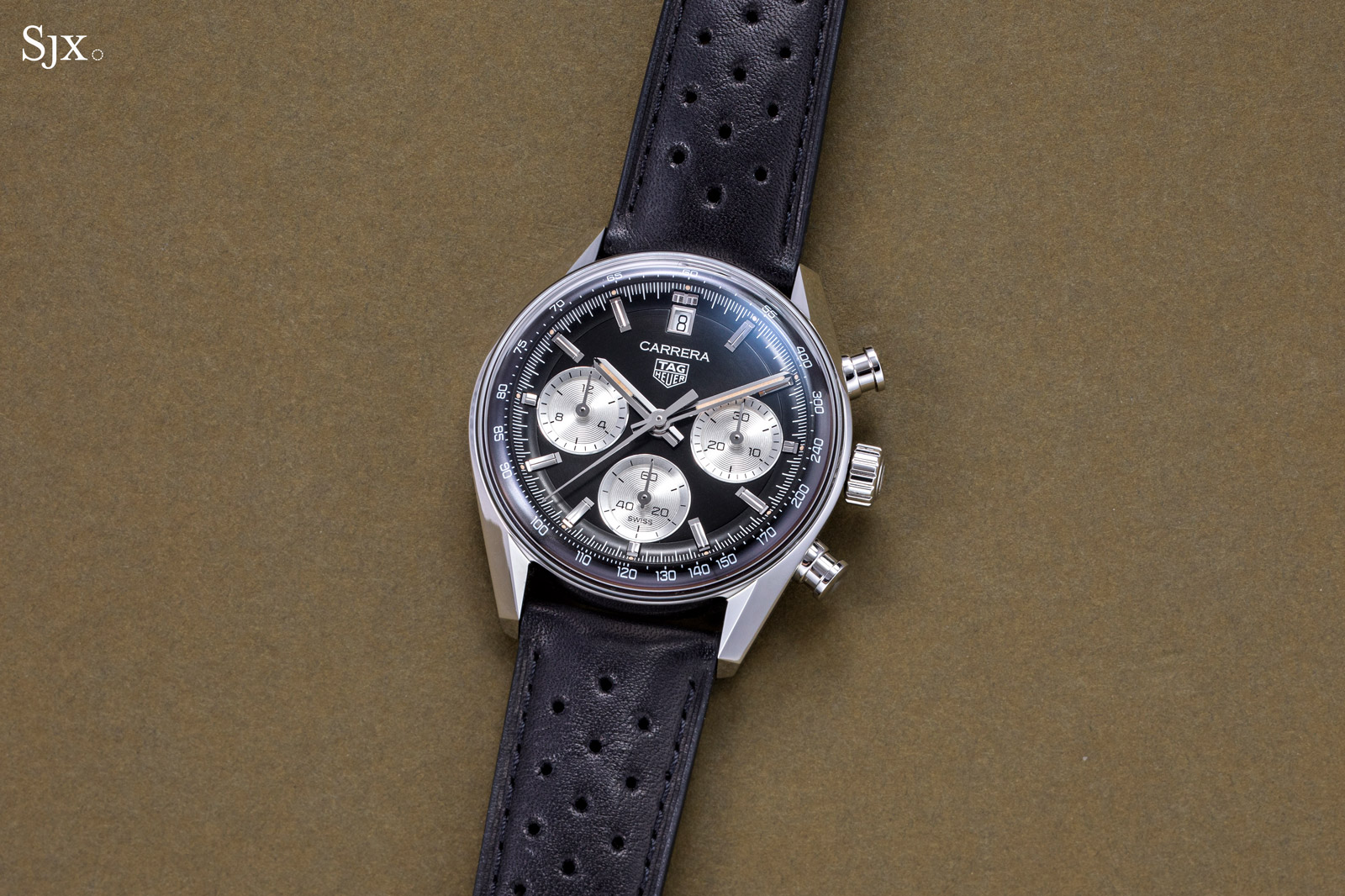
Key facts and price
TAG Heuer Carrera Chronograph “Glassbox”
Ref. CBS2210.FC6534 (black “reverse panda” dial)
Ref. CBS2212.FC6535 (blue dial)
Diameter: 39 mm
Height: Unavailable
Material: Polished steel
Crystal: Sapphire
Water resistance: 100 m
Movement: Calibre TH20-00 Automatic
Features: Hours, minutes, seconds, date, chronograph
Frequency: 28,800 beats per hour (4 Hz)
Winding: Automatic
Power reserve: 80 hours
Strap: Leather strap with folding clasp
Limited edition: No
Availability: At TAG Heuer boutiques and retailers
Price: US$6,450; or 9,200 Singapore dollars
For more, visit Tagheuer.com.
Back to top.

